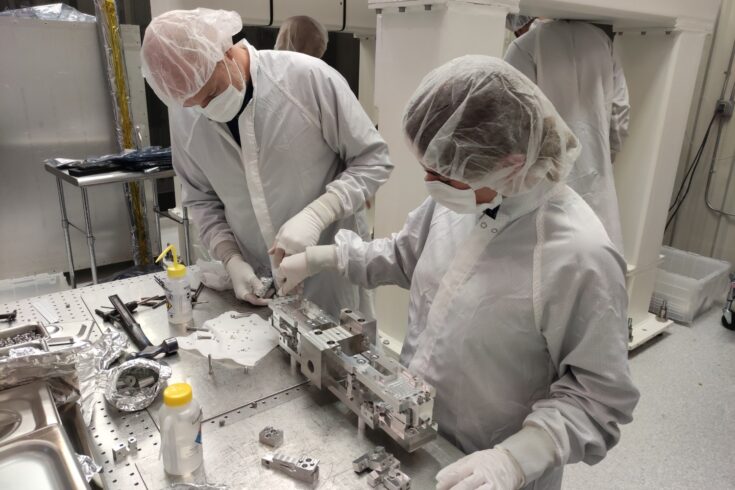How do you measure ripples in space time that are so imperceptible, we don’t even realise that they’re constantly stretching and squashing the world around us?
The answer is, in part, by using new technology developed with support from the Science and Technology Facilities Council (STFC) Technology Department, which will be used to detect gravitational waves at the US Laser Interferometer Gravitational-Wave Observatory, or LIGO.
Unravelling gravitational waves
An interferometer is a type of high-precision measuring tool that can measure distances with incredible accuracy.
LIGO is a laser interferometer that achieves this by using a beamsplitter to split a laser into two beams which are sent along different, four-kilometre-long arms before reflecting off mirrors at the end of each arm and recombining at the beamsplitter.
If gravitational waves have subtly interfered with the beams as they travelled, they will recombine differently at the beamsplitter resulting in interference patterns called fringes which can be measured and studied to reveal the frequency and size of gravitational waves.
Gravitational waves are caused by colossal cosmic events such as supernovas or even the big bang, and so this process allows us to probe the Universe in more detail than ever before.
Defying ground vibrations
For LIGO to detect gravitational waves, it must be capable of measuring changes in distances smaller than a thousandth of the width of a proton. This requires isolation from ground vibrations and noise.
LIGO achieves this using a combination of suspension tools called seismic isolation platforms and multi-stage spring pendulums (often referred to as suspensions).
The Projects and Mechanical Engineering (PEG) Group at the STFC Technology Department works closely with project collaborators including Caltech University, the Massachusetts Institute of Technology, the University of Glasgow, and the University of Birmingham to translate computational models of these suspensions into complex mechanical assemblies.
Expanding the detection range
The latest LIGO upgrade, dubbed the A+ upgrade, aims to nearly double its detection range, resulting in up to seven times more events being detected daily. Among other things, this will include enhancing suspensions.
The PEG Group is uniquely placed to support with this task as members of the group designed the existing Beamsplitter and Quadruple suspensions that played a crucial role in LIGO’s first gravitational wave detection in 2015. The team has now supplied over 20,000 production components to the LIGO sites.
More recently, they have been actively involved in designing upgrades to LIGO’s suspension for the A+ upgrade programme. Following a thorough design process, prototype suspensions were assembled in a specially built portable cleanroom at STFC Rutherford Appleton Laboratory, located at Harwell Science and Innovation Campus, in Oxfordshire.
At the forefront
Joe O’Dell, Adam Huddart and Claire Robertson of the STFC Technology Department recently visited the LIGO Hanford Observatory to build some trial assemblies of production hardware and develop training documents that will be used by engineers at the sites to build the final suspensions.
Once built, another visit will be required to completed dynamics testing. Data gathered from the testing will then be used to compare the performance of the production assembles to target design values.
These visits form part of STFC’s ongoing commitment to provide world-leading expertise to support big, international science and unearth the mysteries of the universe.



